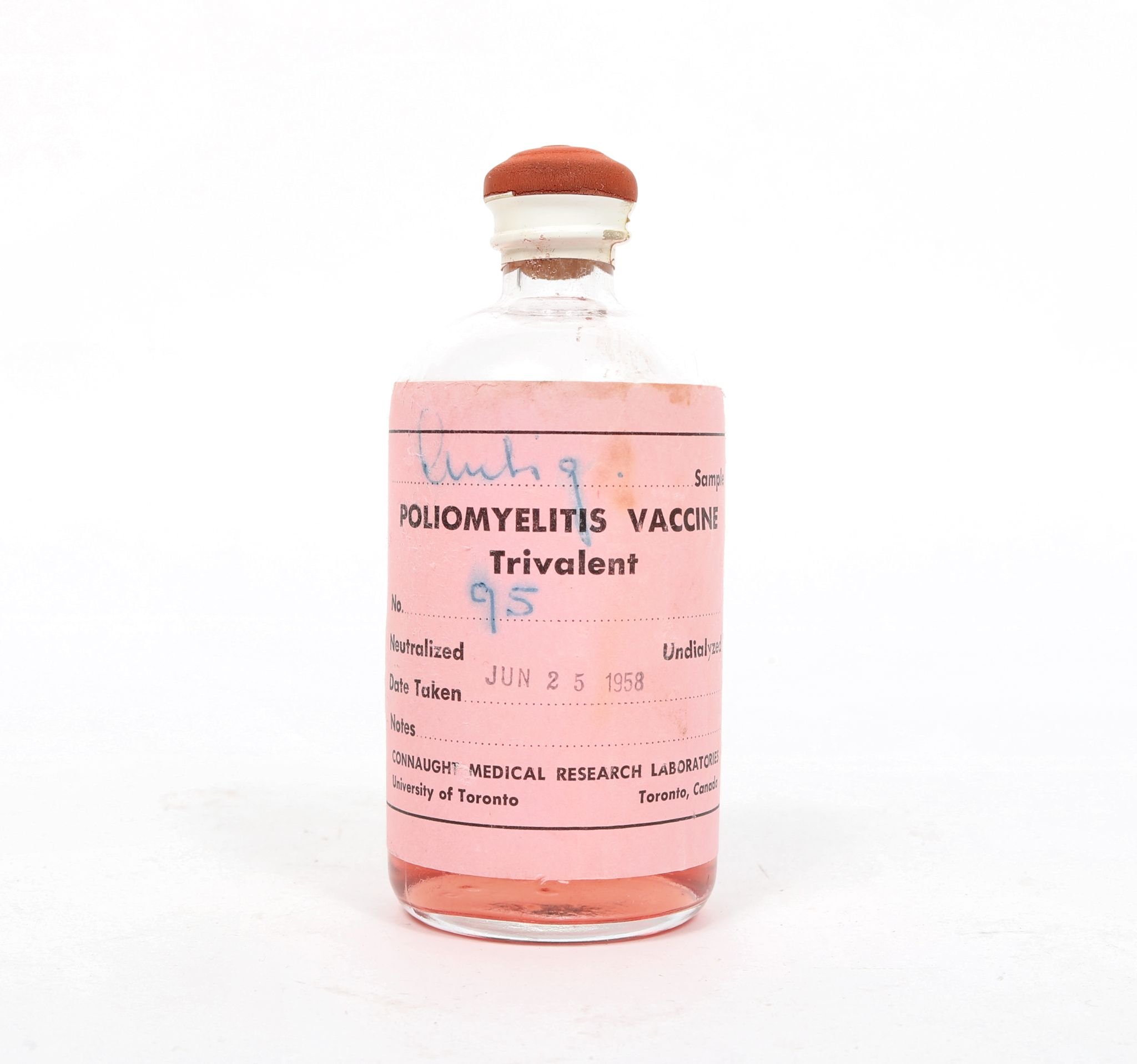FROM FARM TO EXAMINATION TABLE: BIOLOGICAL MEDICINE INNOVATION AT THE UNIVERSITY OF TORONTO
April 2019 – 2021
University of Toronto Scientific Instruments Collection
Faculty of Medicine
Bethune Memorial Lobby, Medical Sciences Building, University of Toronto
Elisabeth Dobson
Hidden all around the University of Toronto campus is evidence of the school’s history as a leader in early Canadian public health. Through three case studies and a unique collection of artefacts from the University’s own holdings, From Farm to Examination table brings that story out of the literal and metaphoric basement. It celebrates the people who pushed their and science’s boundaries to make Canada and the world a healthier place to live, and in doing so inspires visitors to think about the potential of Canadian medical innovation.
From Farm to Examination Table is aimed at undergraduate through post-graduate professors and students in the University of Toronto’s Faculty of Medicine. The text is also written to be accessible to these people’s friends and families who are visiting, balancing technical language with engaging storytelling to respect multiple different knowledge levels.
This exhibit consists of one display case. It is located in the Bethune Memorial Lobby in the University of Toronto’s Medical Sciences Building. The lobby is at one of the building’s entrances, and also connects two of its wings. This makes it a hub of traffic and perfect location to ensure maximum exposure. As an added bonus, it is steps away from the Gerstein Library, which houses many period books and articles from the people featured in the case studies.
This exhibit was made possibly by the Faculty of Medicine’s financial and collections contributions. They funded the entire project and provided the space. Additional support came from the University of Toronto Scientific Instrument Collection (UTSIC), who facilitated the project, and Gerstein Library, who approved me to reproduce one of their books in the case. Research support was generously provided by Dr. Christopher Rutty at the historic rooms at Sanofi Pasteur, and by the University of Toronto Department of the History of Medicine.
Research began in the Fall semester and represented the bulk of the work. Over this and the early parts of the Winter semester, I also met with the person in charge of the Faculty of Medicine collection to begin choosing and planning for artefacts. In February a draft of text was sent out for approval, and it bounced back and forth through March. Production elements – mount building, case prep, finalizing objects and making reproductions – took place throughout March and April.
The case is comprised of 5 panels against the back wall and a series of artefacts displayed in front. To provide visual interest, the artefacts were placed on mounts at various levels. This was important because many of them were quite small. Due to my background in theatre and carpentry, I was able to do all the mounting, installation, and prep work myself. I chose to use photographs as artefacts to lessen the amount of visual activity and need for the eye to jump back and forth between panels and artefacts. A conscious effort was made to use diverse artefacts, not just medicine vials, to showcase the variety of activities medical researchers engage in. The aim was to create a complete picture of the early 1900s medical research experience, since many of the tools, fashions, and architectural styles associated with it are long gone.
Since this case was located in a central and popular location, there was not a heavy focus on marketing. I relied primarily on the class marketing materials (poster, online posts) and word of mouth within the Faculty of Medicine. This is the most powerful type of marketing, and works well in situations like this where there are close-knit social networks. For programming I followed the previous exhibit’s example and hosted a small opening event with speeches. This exhibit will (hopefully) attract many people’s attention. There has already been a great amount of interest from the University of Toronto and other audiences, including numerous members of the dance community due to the curator’s own connections.
I would like to extend a resounding thank you to all the people who’ve supported this project. This exhibit would not have happened without the amazing research, prep, and historical knowledge these people passed on to me. Sanofi Pasteur, the Faculty of Medicine at the University of Toronto, and UTSIC – this would not have happened without all your generosity and ideas. Thank you!
History Exhibit
University of Toronto Faculty of Medicine, University of Toronto Scientific Instruments Collection, education, history, medicine, public health, science, Toronto, University of Toronto
